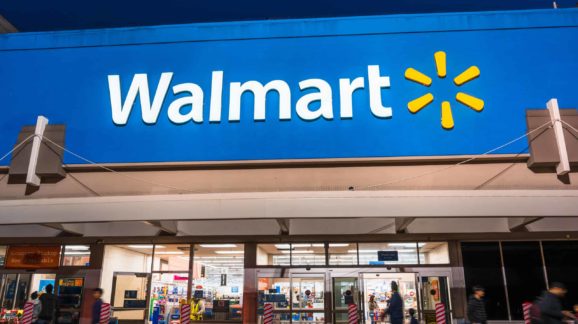Why Walmart Bank Would Be Great for Business, Consumers
As small businesses and consumers struggle to stay afloat amid challenging economic times, access to credit, capital, and other financial services is critically important to their survival. During the pandemic, U.S. bank lending to small businesses – excluding loans subsidized by the federal government’s Paycheck Protection Program – has contracted at the sharpest rate since the 2008-09 financial crisis. Consumers are struggling, as well. Even before the pandemic, approximately one in every five American households wasunderbanked in 2019, according to the Federal Reserve.
Fortunately, one bank regulator – Federal Deposit Insurance Commission Chair Jelena McWilliams – is trying to peel away red tape that makes it harder for banks to serve consumers and small business. More importantly, she is lifting regulatory barriers that make it difficult for new specialized banks to form.
“With 14 million American adults without a bank account, we want to see more banks, not fewer,” McWilliams wrote in American Banker. McWilliams notes that only two new startup banks opened between the end of 2010 and the end of 2016. “Never before has the level of new banks been so low for so long,” she points out.
McWilliams made approval of new banks a priority, and there has been progress during her tenure. The FDIC authorized more than 30 new banks since 2018. This is still a far cry, however, from the average of 170 banks approved per year before 2010, because years of red tape from laws and regulations got in the way.
In the time remaining before her term as FDIC chair expires in 2023, McWilliams must continue to do what she can to advance this progress. She should also press ahead with authorization of industrial loan companies (ILCs), which include limited-purpose banking affiliates of commercial enterprises such as retailers and manufacturers. Retailers and manufacturers should be able to offer banking services, in other words. In December 2020, the FDIC finalized a rule streamlining the ILC approval process.
The history of ILCs in the U.S. dates back more than a century, and banking subsidiaries of nonfinancial companies are commonplace in nearly every other industrialized country. In the United Kingdom, for instance, both the Tesco and Sainsbury’s supermarket chains own banks affiliated with their stores. These banks offer credit and debit cards, savings accounts, and loans, and have received awards and high rankings both for customer service and the value of their products. In 1949, the German auto manufacturer Volkswagen created Volkswagen Bank, which specializes in financing for its dealers and customers. The bank now has €83 billion ($101.0 billion) in assets and operates throughout Europe and in Mexico.
Yet in the U.S., politicians and financial regulators prevent the most effectively managed American companies from adding competition and innovation to the banking landscape. Since enactment of the Bank Holding Company Act of 1970, non-financial firms cannot own a full-scale bank in the U.S. as they can in most other countries. And for the past 15 years, these firms have been barred from owning even limited-purpose ILCs.
In the mid-2000s, Walmart, Home Depot, and a retail unit of Warren Buffett’s Berkshire Hathaway holding company all applied to the FDIC for approval of ILCs to provide limited banking services to customers. After trade associations for established banks objected to even this limited form of potential competition, the FDIC imposed a temporary moratorium on ILCs that was later written into the 2010 Dodd-Frank financial overhaul. However, even after the Dodd-Frank moratorium expired in 2013, the FDIC still blocked ILC applications for nonfinancial firms. Applications from Ford, John Deere, and Caterpillar failed to gain approval.
ILC opponents assert that granting approval will allow parent companies to receive cheap financing from affiliated banks and thus increase prudential risks, but the new FDIC rule contains additional protections against this type of self-dealing. Even before this framework was in place, evidence for such assertions was scarce based on international experience with non-financial bank subsidiaries and the record of grandfathered ILCs in the U.S. In fact, several researchers argue that the structure of non-financial ILCs makes them even safer than established banks. A Milken Institute study found that U.S. ILCs have higher ratios of capital to assets and lower shares of troubled assets than the U.S. banking sector as a whole.
University of California-Irvine law professor Mehrsa Baradaran – now a leading contender and a favorite of progressive Democrats to be Comptroller of the Currency in the Biden administration – has argued that ILCs will actually help fortify the banking system from systemic risk. As she writes in the SMU Law Review, “A commercial firm is still vulnerable to systemic shocks, but diversifying the sources of capital in a financial system can lower the risks most banks and investment firms face when the market suddenly sours.”
Read the full article at Real Clear Markets.
